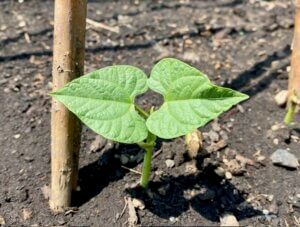Planting Seeds of Hope
One of the highlights of my summer is working with our neighbors and friends in the community garden at Hidden Acres Farm in picturesque Sister Bay, Wisconsin. Every spring, we come together to weed the beds, prepare the soil, plant the seeds, and patiently wait, hoping that our efforts will yield the vegetables pictured on the seed packets. Watching the seeds emerge from the garden is like witnessing a miracle.
Sadly there is a great deal of adversity this little seed will face. After gently pressing the seed into the ground, it must now wait for water, sunlight to warm the soil, and oxygen so it can sprout. It then must overcome the darkness and push itself up out of the dirt as it seeks light. Awaiting its arrival are weeds that want to rob it of the precious resources needed for life. In the face of all this adversity, we wait with hope, believing that the struggle and the wait will be worth it.
As I planted the pole beans a couple of weeks ago, I pondered the power of hope when we encounter adversity. Hope is not a passive occurrence; it requires perseverance, resilience, and unwavering dedication. It demands patience and deep faith in the beauty and potential of the natural world. The combination of seeds, soil, sunlight, oxygen, and water always results in life—it’s the inherent design.
In many ways, we are not so different from the seeds we plant in our gardens each spring. Just like them, we face challenges and difficulties throughout our lives. Unfortunately, many individuals give up prematurely, losing hope and believing that the weeds of life are too overwhelming. However, hope demands effort. We must actively uproot the weeds of self-doubt, exhaustion, obstacles, and setbacks as soon as they rear their ugly heads. It’s crucial to remember that hope is not a sprint but a long-distance race. Similar to how my pole beans won’t be ready for nearly 70 days, we must remain patient and committed to our journey.
I encourage you to reflect on the weeds that may be robbing you of hope in your own life. Take the time to identify them and start pulling them out, one by one. And here’s a final suggestion: don’t do this alone, work with someone else, a companion. The community garden that Brenda and I work in is a testament to the power and beauty of collective effort. We plant, weed, water, and harvest together as a community. Who can join you today in cultivating your soul’s garden so that hope can spring eternal?
